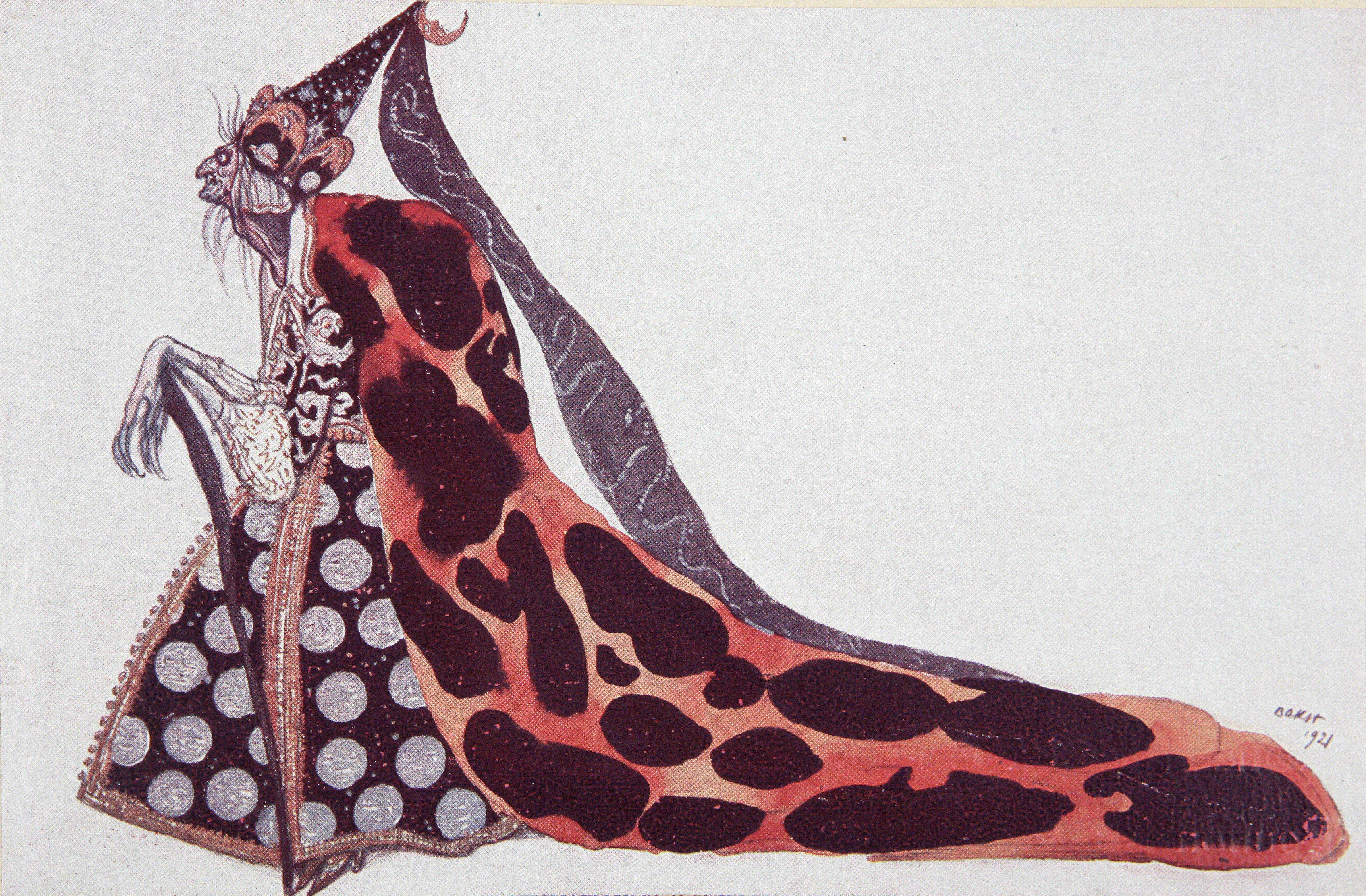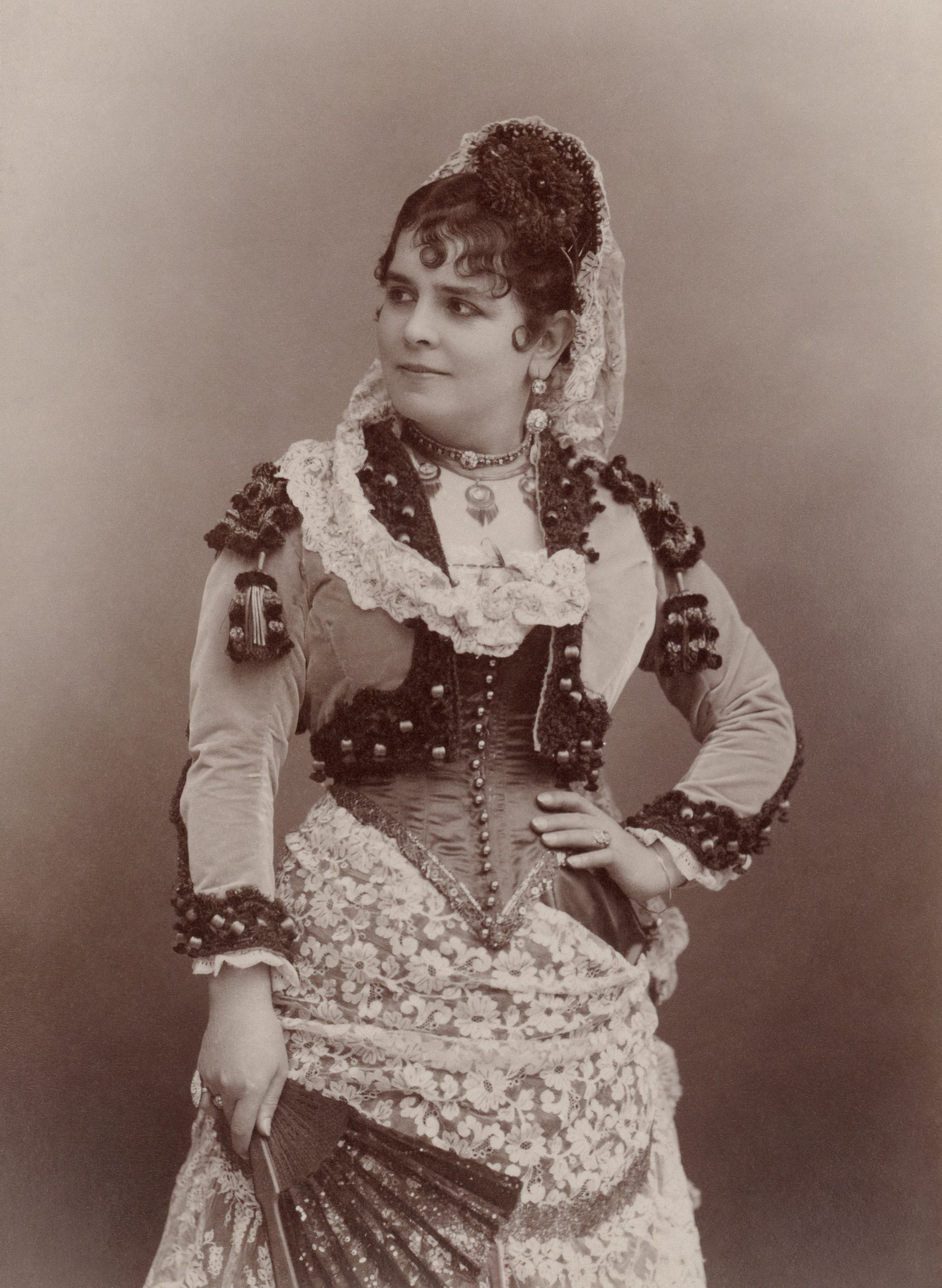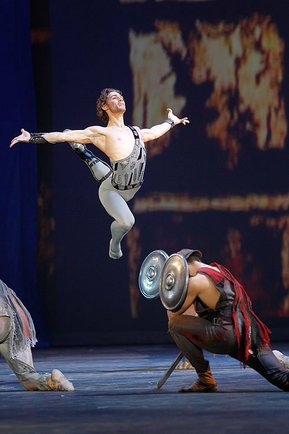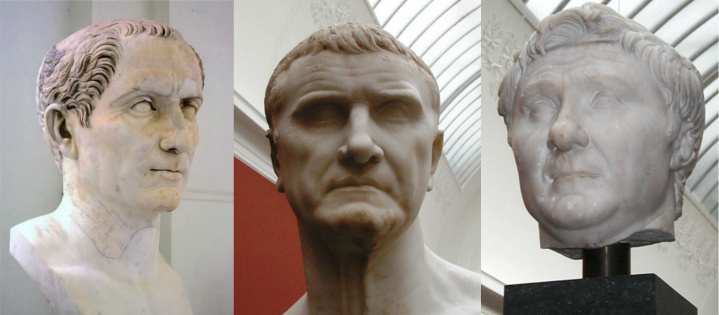|
Daniel Rajna
Daniel Rajna born 1968, is a South African ballet dancer. After gaining a BSc in applied mathematics at UCT, he trained at the UCT Ballet school, Cape Town. He joined the former CAPAB Ballet in 1990, before leaving in 1997 to join PACT Ballet in Pretoria. He returned to Cape Town in 1999 and was a principal dancer at the Cape Town City Ballet. He is known for his interpretation of dramatic ballets and his partnership with friend, Tracy Li. He and his wife Leanne Voysey, a former principal dancer with Cape Town City Ballet, have a son Finn (born July 2007). He is the son of composer Thomas Rajna. He has performed as a guest artist in Hong Kong, Zimbabwe, The United States, South Africa and Taiwan. They were also both invited to the 2004 International Ballet Festival of Miami. He retired in August 2007 after several performances of Camille. After retirement Rajna made a radical career change and after studying for three years, joined a civil consultancy as a dam designer. He con ... [...More Info...] [...Related Items...] OR: [Wikipedia] [Google] [Baidu] |
Ballet Dancer
A ballet dancer ( it, ballerina fem.; ''ballerino'' masc.) is a person who practices the art of classical ballet. Both females and males can practice ballet; however, dancers have a strict hierarchy and strict gender roles. They rely on years of extensive training and proper technique to become a part of a professional ballet company. Ballet dancers are at a high risk of injury due to the demanding technique of ballet. Training and technique Ballet dancers typically begin training at an early age if they desire to perform professionally and often take part in international competitions such as YAGP and Prix de Lausanne. At these events, scholarships are being granted to the most talented dancers, enabling them to continue their training at renowned ballet schools around the world, such as the John Kranko Schule in Germany and the Académie de Danse Classique Princesse Grace in Monaco. Pre-professional ballet dancers can audition to enroll at a vocational ballet school such ... [...More Info...] [...Related Items...] OR: [Wikipedia] [Google] [Baidu] |
Cape Town Philharmonic Orchestra
The Cape Town Philharmonic Orchestra (CPO) is an orchestra based in Cape Town, Western Cape, South Africa. History Founded by the Cape Town City Council, the Cape Town Municipal Orchestra held its inaugural concert on 28 February 1914 in the Cape Town City Hall. This orchestra and its predecessors soon established a reputation both nationally and internationally, with concerts and tours throughout South Africa, the UK, Taiwan, the Canary Islands and the United States. Apart from regular symphony concerts, the Cape Town Philharmonic Orchestra (as it is known today), regularly accompanies Cape Town Opera; Cape Town City Ballet; musicals; pop, community, family and crossover concerts, presenting 120 concerts per annum or more. Traditional venues such as the Cape Town City Hall, Artscape Opera, community and schools halls, and such outdoor venues as Kirstenbosch, Oude Libertas Amphitheatre, and Nederburg Wines, all point to the orchestra's community involvement. Educationa ... [...More Info...] [...Related Items...] OR: [Wikipedia] [Google] [Baidu] |
The Sleeping Beauty (ballet)
''The Sleeping Beauty'' ( rus, Спящая красавица, Spyashchaya krasavitsa ) is a ballet in a prologue and three acts, first performed in 1890. The music was composed by Pyotr Ilyich Tchaikovsky ( Opus 66). The score was completed in 1889, and is the second of his three ballets. The original scenario was conceived by Ivan Vsevolozhsky, and is based on Charles Perrault's ''La Belle au bois dormant''. The choreographer of the original production was Marius Petipa. The premiere performance took place at the Mariinsky Theatre in St. Petersburg on January 15, 1890. The work has become one of the classical repertoire's most famous ballets. History Tchaikovsky was approached by the Director of the Imperial Theatres in St. Petersburg, Ivan Vsevolozhsky on 25 May 1888 about a possible ballet adaptation on the subject of the story of '' Undine''. It was later decided that Charles Perrault's ''La Belle au bois dormant'' would be the story for which Tchaikovsky wou ... [...More Info...] [...Related Items...] OR: [Wikipedia] [Google] [Baidu] |
The Nutcracker
''The Nutcracker'' ( rus, Щелкунчик, Shchelkunchik, links=no ) is an 1892 two-act ballet (""; russian: балет-феерия, link=no, ), originally choreographed by Marius Petipa and Lev Ivanov with a score by Pyotr Ilyich Tchaikovsky (Op. 71). The libretto is adapted from E. T. A. Hoffmann's 1816 short story "The Nutcracker and the Mouse King". Although the original production was not a success, the 20-minute suite that Tchaikovsky extracted from the ballet was. The complete ''Nutcracker'' has enjoyed enormous popularity since the late 1960s and is now performed by countless ballet companies, primarily during the Christmas season, especially in North America. Major American ballet companies generate around 40% of their annual ticket revenues from performances of ''The Nutcracker''. The ballet's score has been used in several film adaptations of Hoffmann's story. Tchaikovsky's score has become one of his most famous compositions. Among other things, the score is ... [...More Info...] [...Related Items...] OR: [Wikipedia] [Google] [Baidu] |
Romeo And Juliet (Prokofiev)
''Romeo and Juliet'' (russian: Ромео и Джульетта, Romeo i Dzhulyetta), Op. 64, is a ballet by Sergei Prokofiev based on William Shakespeare's play ''Romeo and Juliet''. First composed in 1935, it was substantially revised for its Soviet premiere in early 1940. Prokofiev reused music from the ballet in three suites for orchestra and a solo piano work. Background and premiere Based on a synopsis created by Adrian Piotrovsky (who first suggested the subject to Prokofiev) and Sergey Radlov, the ballet was composed by Prokofiev in September 1935 to their scenario which followed the precepts of "drambalet" (dramatised ballet, officially promoted at the Kirov Ballet to replace works based primarily on choreographic display and innovation). Following Radlov's acrimonious resignation from the Kirov in June 1934, a new agreement was signed with the Bolshoi Theatre in Moscow on the understanding that Piotrovsky would remain involved. However, the ballet's original happy ... [...More Info...] [...Related Items...] OR: [Wikipedia] [Google] [Baidu] |
La Sylphide
''La Sylphide'' ( en, The Sylph; da, Sylfiden) is a romantic ballet in two acts. There were two versions of the ballet; the original choreographed by Filippo Taglioni in 1832, and a second version choreographed by August Bournonville in 1836. Bournonville's is the only version known to have survived and is one of the world's oldest surviving ballets. Taglioni version On 12 March 1832 the first version of ''La Sylphide'' premiered at the Salle Le Peletier of the Paris Opéra with choreography by the groundbreaking Italian choreographer Filippo Taglioni and music by Jean-Madeleine Schneitzhoeffer. Taglioni designed the work as a showcase for his daughter Marie. ''La Sylphide'' was the first ballet where dancing '' en pointe'' had an aesthetic rationale and was not merely an acrobatic stunt, often involving ungraceful arm movements and exertions, as had been the approach of dancers in the late 1820s. Marie was known for shortening her skirts in the performance of ''La Sylp ... [...More Info...] [...Related Items...] OR: [Wikipedia] [Google] [Baidu] |
A Midsummer Night's Dream
''A Midsummer Night's Dream'' is a comedy written by William Shakespeare 1595 or 1596. The play is set in Athens, and consists of several subplots that revolve around the marriage of Theseus and Hippolyta. One subplot involves a conflict among four Athenian lovers. Another follows a group of six amateur actors rehearsing the play which they are to perform before the wedding. Both groups find themselves in a forest inhabited by fairies who manipulate the humans and are engaged in their own domestic intrigue. The play is one of Shakespeare's most popular and is widely performed. Characters * Theseus— Duke of Athens * Hippolyta—Queen of the Amazons * Egeus—father of Hermia * Hermia—daughter of Egeus, in love with Lysander * Lysander—in love with Hermia * Demetrius—suitor to Hermia * Helena—in love with Demetrius * Philostrate— Master of the Revels * Peter Quince—a carpenter * Nick Bottom—a weaver * Francis Flute—a bellows-mender * Tom Snout ... [...More Info...] [...Related Items...] OR: [Wikipedia] [Google] [Baidu] |
Puck (Shakespeare)
Puck, or Robin Goodfellow, is a character in William Shakespeare's play, ''A Midsummer Night's Dream''. Based on the Puck of English mythology and the púca of Celtic mythology, Puck is a mischievous fairy, sprite, or jester. He is the first of the main fairy characters to appear, and he significantly influences events in the play. He delights in pranks such as replacing Bottom's head with that of an ass. Appearances in the play The audience is introduced to Puck in 2.1: FAIRY: Either I mistake your shape and making quite, Or else you are that shrewd and knavish sprite Call'd Robin Goodfellow: are you not he That frights the maidens of the villagery; Skim milk, and sometimes labour in the quern, And bootless make the breathless housewife churn; And sometime make the drink to bear no barm; Mislead night wanderers, laughing at their harm? Those that Hobgoblin call you and sweet Puck, You do their work, and they shall have good luck: Are you not he? PUCK: Fairy, ... [...More Info...] [...Related Items...] OR: [Wikipedia] [Google] [Baidu] |
Carmen
''Carmen'' () is an opera in four acts by the French composer Georges Bizet. The libretto was written by Henri Meilhac and Ludovic Halévy, based on the novella of the same title by Prosper Mérimée. The opera was first performed by the Opéra-Comique in Paris on 3 March 1875, where its breaking of conventions shocked and scandalised its first audiences. Bizet died suddenly after the 33rd performance, unaware that the work would achieve international acclaim within the following ten years. ''Carmen'' has since become one of the most popular and frequently performed operas in the classical canon; the " Habanera" from act 1 and the "Toreador Song" from act 2 are among the best known of all operatic arias. The opera is written in the genre of ''opéra comique'' with musical numbers separated by dialogue. It is set in southern Spain and tells the story of the downfall of Don José, a naïve soldier who is seduced by the wiles of the fiery gypsy Carmen. José abandons his childho ... [...More Info...] [...Related Items...] OR: [Wikipedia] [Google] [Baidu] |
Spartacus (ballet)
''Spartacus'' (russian: «Спартак», Spartak) is a ballet by Aram Khachaturian (1903–1978). The work follows the exploits of Spartacus, the leader of the slave uprising against the Romans known as the Third Servile War, although the ballet's storyline takes considerable liberties with the historical record. Khachaturian composed ''Spartacus'' in 1954, and was awarded a Lenin Prize for the composition that same year. It was first staged in Leningrad on 27 December 1956, as choreographed by Leonid Yakobson, for the Kirov Theatre of Opera and Ballet (Mariinsky Theatre), where it stayed in repertory for many years, but only with qualified success since Yakobson abandoned conventional '' pointe'' in his choreography. Yakobson restaged his version for the Bolshoi in 1962 and it was part of the Bolshoi's 1962 tour to New York. The ballet received its first staging at the Bolshoi Theatre, Moscow in 1958, choreographed by Igor Moiseyev; however it was the 1968 production, chor ... [...More Info...] [...Related Items...] OR: [Wikipedia] [Google] [Baidu] |
Crassus
Marcus Licinius Crassus (; 115 – 53 BC) was a Roman general and statesman who played a key role in the transformation of the Roman Republic into the Roman Empire. He is often called "the richest man in Rome." Wallechinsky, David & Wallace, Irving.Richest People in History Ancient Roman Crassus. Trivia-Library. '' The People's Almanac''. 1975–1981. Web. 23 December 2009."Often named as the richest man ever, a more accurate conversion of sesterce would put his modern figure between $200 million and $20 billion." Peter L. BernsteinThe 20 Richest People Of All Time/ref> Crassus began his public career as a military commander under Lucius Cornelius Sulla during his civil war. Following Sulla's assumption of the dictatorship, Crassus amassed an enormous fortune through real estate speculation. Crassus rose to political prominence following his victory over the slave revolt led by Spartacus, sharing the consulship with his rival Pompey the Great. A political and fina ... [...More Info...] [...Related Items...] OR: [Wikipedia] [Google] [Baidu] |
Don Quixote (ballet)
''Don Quixote'' is a ballet in three acts, based on episodes taken from the famous novel '' Don Quixote de la Mancha'' by Miguel de Cervantes. It was originally choreographed by Marius Petipa to the music of Ludwig Minkus and first presented by Moscow's Bolshoi Ballet on . Petipa and Minkus revised the ballet into a more elaborate and expansive version in five acts and eleven scenes for the Mariinsky Ballet, first presented on at the Imperial Bolshoi Kamenny Theatre of St. Petersburg. All modern productions of the Petipa/Minkus ballet are derived from the version staged by Alexander Gorsky for the Bolshoi Theatre of Moscow in 1900, a production the ballet master staged for the Imperial Ballet of St. Petersburg in 1902. History Earlier versions The two chapters of the novel that the ballet is mostly based on were first adapted for the ballet in 1740 by Franz Hilverding in Vienna, Austria. In 1768, Jean Georges Noverre mounted a new version of ''Don Quixote'' in Vie ... [...More Info...] [...Related Items...] OR: [Wikipedia] [Google] [Baidu] |









